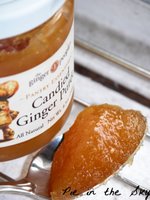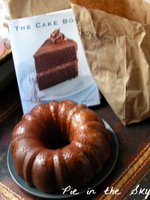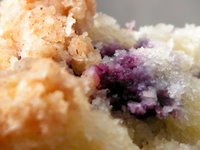
This morning, on my Day Off from my forty-hour-workweek job where I serve affluent people dinner, I filled a bowl with granola and honey, closed the bedroom door on a kitchen full of household responsibilities, and curled up in bed with a book – For Her Own Good, by Barbara Ehrenreich and Deirdre English. Chronicling “150 years of the experts’ advice to women,” this treasure chest of feminist nonfiction traces the “Woman Question” – what does a woman do with her life? - from the era of industrialization to the present (relatively speaking – For Her Own Good was originally published in 1978).
 As women struggled to reorient to a new, market-centric industrial society, the sun rose and spilled through the bamboo slats of my bedroom blinds. Unable to face the host of chores a Day Off might allow me to accomplish, I instead lounged in heaps of down comforter and studied the plight of the ethereal Victorian invalid female, how doctors attributed her misery not to her cinched waist or caged lifestyle, but to her impious “wandering uterus.” Pre-war housewives suffered bored isolation in the home and developed a new, expanded definition of domesticity as W. and I occupied our respective rooms, poring over our respective feminist literature, our respective dishes languishing in the sink.
As women struggled to reorient to a new, market-centric industrial society, the sun rose and spilled through the bamboo slats of my bedroom blinds. Unable to face the host of chores a Day Off might allow me to accomplish, I instead lounged in heaps of down comforter and studied the plight of the ethereal Victorian invalid female, how doctors attributed her misery not to her cinched waist or caged lifestyle, but to her impious “wandering uterus.” Pre-war housewives suffered bored isolation in the home and developed a new, expanded definition of domesticity as W. and I occupied our respective rooms, poring over our respective feminist literature, our respective dishes languishing in the sink.
 Now, this wasn’t the sort of cake-baking impulse that Julienne Moore has in “The Hours,” where she comes out of her isolated domestic anguish to bake the perfect birthday confection and then goes off the kill herself. But what else is a modern girl to do on her Day Off? In The Feminine Mystique, Betty Friedan describes the frustrating predicament of the contemporary superwoman who is expected to simultaneously be a thriving career professional and a graceful, competent mother/wife/ cook/domestic laborer. While my job hardly qualifies me as a "career professional," and I have no kids and am not solely responsible for home maintenance (not to mention the relative ease of maintaining 350 square feet of New York apartment compared to a sprawling four-bedroom in the suburbs), I still experience the inherent contradiction of a Day Off and the weekly surfeit of awaiting domestic responsibilities. How is it that, fifty-three years after Friedan articulated the impossibility of the superwoman, I still find myself in that same paradox?
Now, this wasn’t the sort of cake-baking impulse that Julienne Moore has in “The Hours,” where she comes out of her isolated domestic anguish to bake the perfect birthday confection and then goes off the kill herself. But what else is a modern girl to do on her Day Off? In The Feminine Mystique, Betty Friedan describes the frustrating predicament of the contemporary superwoman who is expected to simultaneously be a thriving career professional and a graceful, competent mother/wife/ cook/domestic laborer. While my job hardly qualifies me as a "career professional," and I have no kids and am not solely responsible for home maintenance (not to mention the relative ease of maintaining 350 square feet of New York apartment compared to a sprawling four-bedroom in the suburbs), I still experience the inherent contradiction of a Day Off and the weekly surfeit of awaiting domestic responsibilities. How is it that, fifty-three years after Friedan articulated the impossibility of the superwoman, I still find myself in that same paradox?
I feel that women of my generation face actually face an intensified version of Friedan’s dilemma. Bred by traditional families and mothers dedicated to the science of homemaking, we feel the impulse to dedicate all our energies to keeping immaculate, welcoming homes filled with healthful foods and relief from the commercial world (living in bustling New York City makes this last bit especially essential). Likewise, we are the daughters of the equal rights movement and are encouraged from childhood to develop skills and drive to hold the stations in the Market those women achieved for us. The stakes are then raised additionally by our modern addiction to consumption – to things, which imparts further pressure to make not just money, but lots of money. (Certainly, both men and women experience the ever-tightening stays on the job-market’s waistline.) On the other hand, industrialization has proceeded so far since the turn of the (last) century that very little specialization is essential. While the consumer market blooms with things, very few lucrative jobs exist anymore – and certainly none that would also allow us to flourish as homemakers.
I try to alleviate these various pressures somewhat by avoiding a consumption-driven lifestyle, by living in a manageably small place, by choosing a partner that willingly shares domestic burdens, and by forgiving myself daily for not meeting my own expectations. And by making cakes when I perhaps ought to be doing other things.
Recently, in response to my overwhelming enthusiasm for The Good Cookie by Tish Boyle, my favorite Creampuff alerted me to the existence of another cookbook by the esteemed Ms. Boyle, The Cake Book. Upon its arrival, The Cake Book filled me with an awe and pleasure not dissimilar to that I experienced reading For Her Own Good this morning - what comprehensive understanding of the issues at hand! Such clever writing, such authority and wit! How compelling, appealing, how tantalizing, this ardent feminism...this cake!
And so, this morning, my wayward uterus compelled me (or so Victorian doctors say; I’m inclined to believe it was my stomach) to bake…Lemon-Soaked Ginger Pound Cake. This is one of those delicious, easy cakes that's still just difficult enough, with a soaking syrup, to make you feel like a professional. My prowess in the Domestic Sciences also allowed me to make two small adjustments: I used crème fraiche instead of sour cream for a slightly buttery-er flavor and a softer crumb, and I substituted candied ginger puree for finely chopped candied ginger, because I don't like all those little chewy nibs in my cake. The subtle heat and snappy tang of the ginger and lemon commingle in a very unfeminine surge of palatal pleasure.
INGREDIENTS
 2½ cups all-purpose flour
2½ cups all-purpose flour
½ cup cake flour
2½ teaspoons ground ginger
½ teaspoon baking powder
½ teaspoon baking soda
½ teaspoon salt
1 cup (2 sticks) unsalted butter, softened
1¾ cups granulated sugar
4 large eggs at room temperature
2 tablespoons peeled and grated fresh ginger
½ cup finely chopped crystallized ginger, OR 3 tablespoons candied ginger puree
2 teaspoons finely grated lemon zest
1 teaspoon vanilla extract
1 cup sour cream OR crème fraiche
1/3 cup freshly squeezed lemon juice
2/3 cup granulated sugar
DIRECTIONS
Preheat oven to 350 degrees. Grease and flour a 10-inch Bundt pan.
Sift together in a large bowl: flours, ground ginger, baking powder and soda, salt. Set aside.
Beat butter in a separate bowl until light and creamy, about 2 minutes. Gradually add the sugar at medium-high speed until the mixture is light in color and texture, about 3 minutes (I found this to be a lot, but Tish usually knows what she’s talking about, so…). Beat in one egg at a time, beating 30-40 seconds after each addition and scraping down the sides of the bowl as necessary. Beat in grated ginger, crystallized ginger or puree, lemon zest, and vanilla extract.
At low speed, add the sifted mixture in three additions alternating with sour cream (or crème fraiche). Scrape batter into prepared pan and smooth with a spatula.
Bake the cake for 50-55 minutes, or until a toothpick inserted near the center comes out clean. Cool in the pan on a rack for ten minutes, then invert the cake onto another rack. Slide a baking sheet under the cake to catch the glaze drippings.
 While the cake is baking, combing the lemon juice and sugar in a small, nonreactive saucepan and cook over medium heat, stirring, just until sugar is dissolved remove from heat.
While the cake is baking, combing the lemon juice and sugar in a small, nonreactive saucepan and cook over medium heat, stirring, just until sugar is dissolved remove from heat.
Using a pastry brush, dab the syrup generously all over the surface of the warm cake, allowing it to soak in before reapplying. Use the whole pan of soaking syrup and dab any extra that has dripped onto the baking sheet over the cake again.
Dust the top of the cooled cake with confectioners’ sugar just before serving.
Now, domestic instincts and skilled professional ego sated, I'll settle in for a slice.




